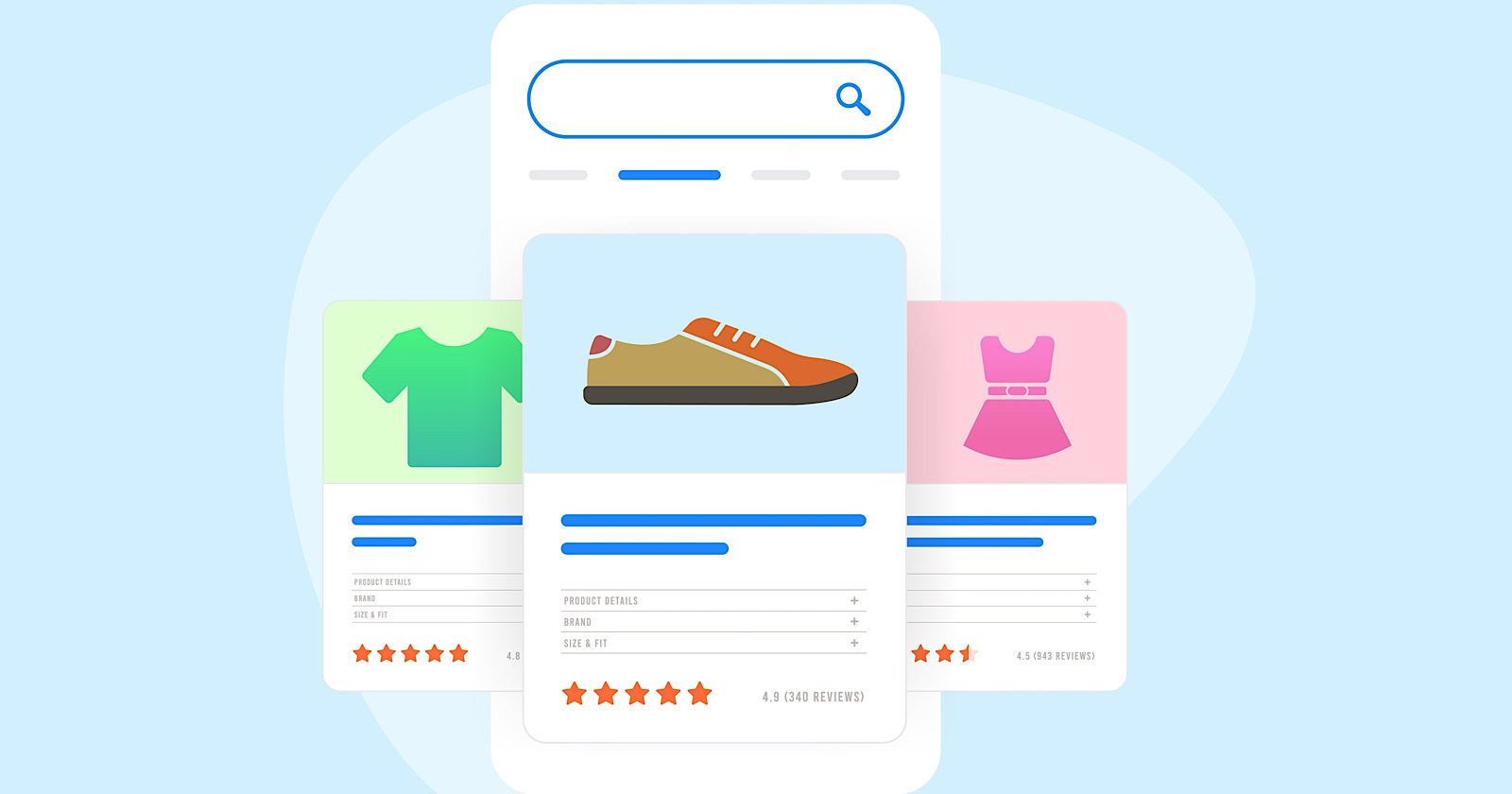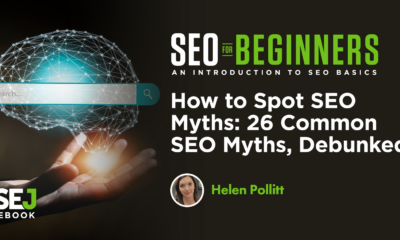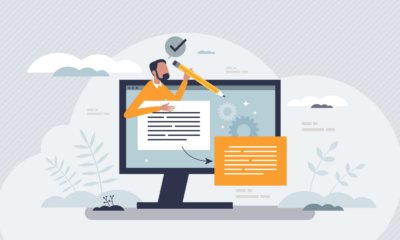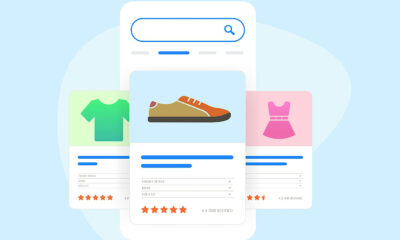SEO
Content Personalization: What Is It?

Are customers finding relevant, informative content when they search for your business or visit your website?
How do you create a more seamless experience devoid of friction from the start of the sales journey?
Creating meaningful experiences through personalized content is a great place to start.
If you’re not consistently testing, analyzing, and refining your customer experience strategy, you risk losing your current and potential customer base.
One of the most integral components of the customer experience is content marketing.
Yet, many content marketers neglect to create relevant and useful content, instead focusing on how the content benefits their business rather than the customer.
In this post, we’ll explore what exactly personalized content is, how it benefits the end user, examples of personalization, and how to create a successful content personalization strategy.
Let’s get started.
What Is Personalized Content?
Customers crave personalization in every aspect of life – from their shopping preferences to the types of food they eat and the home decor styles they desire.
They are more likely to spend their time and money on products and services that align with their preferences, wants, and needs.
For example, say you’re shopping for black winter boots on a retailer’s website and view multiple product pages featuring different boots, but don’t actually purchase anything.
When you exit the page, you’re later sent a promotional email for 20% off the retailer’s winter jackets.
In this instance, you might ignore the retailer’s email and even unsubscribe entirely from its email list, as you are being served irrelevant content.
This example halts the user’s journey rather than moving them further down the sales funnel.
It would have been a more worthwhile strategy to deliver engaging content based on the customer’s predetermined shopping preferences and the items they are actually looking for.
The Case For Building A Content Personalization Strategy
Content personalization strategy entails leveraging online consumer data insights to deliver relevant content.
By consistently monitoring and analyzing this data, brands can, in turn, better understand their end users’ interests and motivations.
Surfacing relevant and timely information improves the online user experience, leading to higher conversions and sales.
Research shows that 80% of consumers are more likely to buy from a company that provides a tailored experience, furthering the need for a personalized content marketing strategy.
The results of content personalization are tangible for businesses too.
Ninety-seven percent of marketers report a measurable lift from their personalization efforts.
Additionally, a separate study found that 51% of retailers with an end-to-end personalization strategy earned 300% ROI or more.
Knowing personalization can improve conversion rates, how can content marketers improve this effort? We’ll explore that next.
How Can I Personalize My Content?
Creating individualized content sounds ideal in theory, but how can your business effectively take on this endeavor?
As a savvy marketer, you should understand the demographic factors and ideal target personas that make up your audience.
Your audience probably has different wants and needs.
Thinking back to the previous winter boots example and applying it to your audience, different members of your audience likely have varying budgets, style preferences, and uses for the boots.
This is where audience segmentation comes into play.
Whether your business uses Google Analytics, another web analytics service, or a personalization software solution, you can break down your audience segments into groups.
By breaking down your audience segments and behaviors, you will better understand the types of content each group will engage with most and what will resonate best.
These user behaviors insights include:
Generally, four methods can be used for audience segmentation, which we will explain further below.
Demographic Personalization
Demographic personalization entails segmenting your audience based on their demographic makeup and other behavioral factors. This may include targeting a customer based on their:
- Age.
- Geography.
- Language.
- Gender.
- Job title.
- Devices used.
- Browser.
- Screen resolution.
- Device category (desktop, mobile, tablet, etc.).
- And more.
Demographic personalization can help provide more relevant information, but it shouldn’t be the only way your business segments your audience.
Persona-Based Personalization
Every business should have a strong understanding of its ideal buyer persona – from what your target customer looks like to how they shop, work, and behave.
Persona-based personalization goes a level deeper than just understanding your audience’s demographics.
It entails understanding purchase drivers, pain points and challenges, and the user’s role in the purchasing decision.
For more complex purchases, there are likely several key personas you’ll want to develop content for.
Personalizing content to each key decision-maker allows you to connect with a wider audience of stakeholders and address their concerns more effectively.
For example, a chief financial offer (CFO) may want to learn how you can solve their problems for less. A manager may focus on ease of use, training, and implementation.
Each persona will have a different pain point. It’s up to your business to explain how you can solve these diverse pain points for each stakeholder.
To obtain this deeper level of information, ask your customers to fill out a brief online survey post-purchase.
Keep the online survey short; each question asked should have a purpose for evaluating either the customer or your business.
You can also build customer profiles through your email marketing efforts. Ask your customers to opt into your emails during your checkout process.
Allow customers to select their email preferences, from the type of content they want to receive from your business to the frequency of emails they’d like to receive from you.
These insights will help you discern the types of content your customers want to receive from you.
Buyer-Journey Personalization
Delivering content based on where users are in the sales funnel is crucial.
For example, if a customer found your business through search, they’re likely in the awareness stage and comparing you to competitors.
They’re seeking more information to help guide their purchase decision at this stage.
A business may benefit from sharing content in the form of a blog post, video, or social content in the awareness stage.
If a customer already has made previous purchases with you, they’ll want more personalized content.
In the previous retailer example, if the customer bought black boots from you before, perhaps they’ll be enticed to purchase from you again with a 15% off SMS message.
When your digital marketing team creates compelling content that anticipates and matches the buyer’s interest and stage of the sales journey, you increase the chances of conversion and drive more qualified leads.
Content insights will also enable digital marketers and sales teams to better understand what content is most impactful, so you can better tailor your content calendar and frame your sales approach when it is time to connect.
Individual-Specific Personalization
The three aforementioned approaches to personalized content will help elevate your personalization strategy. However, you’re still crafting marketing content for a larger target audience.
Customers want to feel like more than just a number.
An Adobe survey found that 42% of consumers say seeing personalized content from a business is somewhat or very important. In the same survey, 35% of consumers stated personalized experiences improve their perception of the business.
It’s clear consumers no longer accept one-size-fits-all content experiences.
Segmenting individual consumers may seem an arduous task to accomplish manually, which is why businesses rely primarily on machine learning and AI technology to accomplish this task.
Through machine and AI learning, content is delivered using first- and third-party data to best serve the consumer’s needs.
This type of customization ensures the consumer is only presented with digital content that is relevant to them. This may look like special offers, dedicated landing pages, specific product recommendations, personal emails, and more.
What Are A Few Examples Of Content Personalization?
Many of the largest, most recognizable industry innovators shape their user experiences around personalization.
Netflix is a common household name and a well-known service to many.
As Netflix shares, personalization plays a large role in its mission.
“Personalized recommendations on the Netflix Homepage are based on a user’s viewing habits and the behavior of similar users. These recommendations, organized for efficient browsing, enable users to discover the next great video to watch and enjoy without additional input or an explicit expression of their intents or goals.”
Google Discover is yet another tool that relies heavily on personalization and curates a feed of content based on a user’s previous searches.
Content that surfaces is unique to the individual and what Google’s automated systems believe to be a good match for the individual’s interests.
For example, if you often search for sports scores or the odds of your favorite football team winning its next game, you’ll likely have a feed filled with sports-related content.
Both of these companies utilize complex machine learning and algorithms to drive their personalization efforts.
While most businesses can’t execute their personalization strategies at the same level as Netflix or Google, personalization solutions can help bridge this gap.
Personalization Isn’t Going Anywhere
The demand for personalization is on the rise, and more marketers are recognizing the benefit of focusing their efforts on improving their customer’s experience.
Netflix, Spotify, Google, Nike, Amazon, and more large companies are prime examples of businesses that excel at personalizing content. Other businesses are on board, too.
A third of organizations are already spending more than half their marketing budget on personalizing digital content. And 97% of organizations plan to maintain or increase their personalization budget over the next five years.
Meet customers’ needs, discontinue broad-based content, and develop or ramp up your content personalization efforts to improve your customer experience (and your ROI).
More resources:
Featured Image: Dean Drobot/Shutterstock
SEO
Google Cautions On Blocking GoogleOther Bot

Google’s Gary Illyes answered a question about the non-search features that the GoogleOther crawler supports, then added a caution about the consequences of blocking GoogleOther.
What Is GoogleOther?
GoogleOther is a generic crawler created by Google for the various purposes that fall outside of those of bots that specialize for Search, Ads, Video, Images, News, Desktop and Mobile. It can be used by internal teams at Google for research and development in relation to various products.
The official description of GoogleOther is:
“GoogleOther is the generic crawler that may be used by various product teams for fetching publicly accessible content from sites. For example, it may be used for one-off crawls for internal research and development.”
Something that may be surprising is that there are actually three kinds of GoogleOther crawlers.
Three Kinds Of GoogleOther Crawlers
- GoogleOther
Generic crawler for public URLs - GoogleOther-Image
Optimized to crawl public image URLs - GoogleOther-Video
Optimized to crawl public video URLs
All three GoogleOther crawlers can be used for research and development purposes. That’s just one purpose that Google publicly acknowledges that all three versions of GoogleOther could be used for.
What Non-Search Features Does GoogleOther Support?
Google doesn’t say what specific non-search features GoogleOther supports, probably because it doesn’t really “support” a specific feature. It exists for research and development crawling which could be in support of a new product or an improvement in a current product, it’s a highly open and generic purpose.
This is the question asked that Gary narrated:
“What non-search features does GoogleOther crawling support?”
Gary Illyes answered:
“This is a very topical question, and I think it is a very good question. Besides what’s in the public I don’t have more to share.
GoogleOther is the generic crawler that may be used by various product teams for fetching publicly accessible content from sites. For example, it may be used for one-off crawls for internal research and development.
Historically Googlebot was used for this, but that kind of makes things murky and less transparent, so we launched GoogleOther so you have better controls over what your site is crawled for.
That said GoogleOther is not tied to a single product, so opting out of GoogleOther crawling might affect a wide range of things across the Google universe; alas, not Search, search is only Googlebot.”
It Might Affect A Wide Range Of Things
Gary is clear that blocking GoogleOther wouldn’t have an affect on Google Search because Googlebot is the crawler used for indexing content. So if blocking any of the three versions of GoogleOther is something a site owner wants to do, then it should be okay to do that without a negative effect on search rankings.
But Gary also cautioned about the outcome that blocking GoogleOther, saying that it would have an effect on other products and services across Google. He didn’t state which other products it could affect nor did he elaborate on the pros or cons of blocking GoogleOther.
Pros And Cons Of Blocking GoogleOther
Whether or not to block GoogleOther doesn’t necessarily have a straightforward answer. There are several considerations to whether doing that makes sense.
Pros
Inclusion in research for a future Google product that’s related to search (maps, shopping, images, a new feature in search) could be useful. It might be helpful to have a site included in that kind of research because it might be used for testing something good for a site and be one of the few sites chosen to test a feature that could increase earnings for a site.
Another consideration is that blocking GoogleOther to save on server resources is not necessarily a valid reason because GoogleOther doesn’t seem to crawl so often that it makes a noticeable impact.
If blocking Google from using site content for AI is a concern then blocking GoogleOther will have no impact on that at all. GoogleOther has nothing to do with crawling for Google Gemini apps or Vertex AI, including any future products that will be used for training associated language models. The bot for that specific use case is Google-Extended.
Cons
On the other hand it might not be helpful to allow GoogleOther if it’s being used to test something related to fighting spam and there’s something the site has to hide.
It’s possible that a site owner might not want to participate if GoogleOther comes crawling for market research or for training machine learning models (for internal purposes) that are unrelated to public-facing products like Gemini and Vertex.
Allowing GoogleOther to crawl a site for unknown purposes is like giving Google a blank check to use your site data in any way they see fit outside of training public-facing LLMs or purposes related to named bots like GoogleBot.
Takeaway
Should you block GoogleOther? It’s a coin toss. There are possible potential benefits but in general there isn’t enough information to make an informed decision.
Listen to the Google SEO Office Hours podcast at the 1:30 minute mark:
Featured Image by Shutterstock/Cast Of Thousands
SEO
AI Search Boosts User Satisfaction

A new study finds that despite concerns about AI in online services, users are more satisfied with search engines and social media platforms than before.
The American Customer Satisfaction Index (ACSI) conducted its annual survey of search and social media users, finding that satisfaction has either held steady or improved.
This comes at a time when major tech companies are heavily investing in AI to enhance their services.
Search Engine Satisfaction Holds Strong
Google, Bing, and other search engines have rapidly integrated AI features into their platforms over the past year. While critics have raised concerns about potential negative impacts, the ACSI study suggests users are responding positively.
Google maintains its position as the most satisfying search engine with an ACSI score of 81, up 1% from last year. Users particularly appreciate its AI-powered features.
Interestingly, Bing and Yahoo! have seen notable improvements in user satisfaction, notching 3% gains to reach scores of 77 and 76, respectively. These are their highest ACSI scores in over a decade, likely due to their AI enhancements launched in 2023.
The study hints at the potential of new AI-enabled search functionality to drive further improvements in the customer experience. Bing has seen its market share improve by small but notable margins, rising from 6.35% in the first quarter of 2023 to 7.87% in Q1 2024.
Customer Experience Improvements
The ACSI study shows improvements across nearly all benchmarks of the customer experience for search engines. Notable areas of improvement include:
- Ease of navigation
- Ease of using the site on different devices
- Loading speed performance and reliability
- Variety of services and information
- Freshness of content
These improvements suggest that AI enhancements positively impact various aspects of the search experience.
Social Media Sees Modest Gains
For the third year in a row, user satisfaction with social media platforms is on the rise, increasing 1% to an ACSI score of 74.
TikTok has emerged as the new industry leader among major sites, edging past YouTube with a score of 78. This underscores the platform’s effective use of AI-driven content recommendations.
Meta’s Facebook and Instagram have also seen significant improvements in user satisfaction, showing 3-point gains. While Facebook remains near the bottom of the industry at 69, Instagram’s score of 76 puts it within striking distance of the leaders.
Challenges Remain
Despite improvements, the study highlights ongoing privacy and advertising challenges for search engines and social media platforms. Privacy ratings for search engines remain relatively low but steady at 79, while social media platforms score even lower at 73.
Advertising experiences emerge as a key differentiator between higher- and lower-satisfaction brands, particularly in social media. New ACSI benchmarks reveal user concerns about advertising content’s trustworthiness and personal relevance.
Why This Matters For SEO Professionals
This study provides an independent perspective on how users are responding to the AI push in online services. For SEO professionals, these findings suggest that:
- AI-enhanced search features resonate with users, potentially changing search behavior and expectations.
- The improving satisfaction with alternative search engines like Bing may lead to a more diverse search landscape.
- The continued importance of factors like content freshness and site performance in user satisfaction aligns with long-standing SEO best practices.
As AI becomes more integrated into our online experiences, SEO strategies may need to adapt to changing user preferences.
Featured Image: kate3155/Shutterstock
SEO
Google To Upgrade All Retailers To New Merchant Center By September

Google has announced plans to transition all retailers to its updated Merchant Center platform by September.
This move will affect e-commerce businesses globally and comes ahead of the holiday shopping season.
The Merchant Center is a tool for online retailers to manage how their products appear across Google’s shopping services.
Key Changes & Features
The new Merchant Center includes several significant updates.
Product Studio
An AI-powered tool for content creation. Google reports that 80% of current users view it as improving efficiency.
This feature allows retailers to generate tailored product assets, animate still images, and modify existing product images to match brand aesthetics.
It also simplifies tasks like background removal and image resolution enhancement.
Centralized Analytics
A new tab consolidating various business insights, including pricing data and competitive analysis tools.
Retailers can access pricing recommendations, competitive visibility reports, and retail-specific search trends, enabling them to make data-driven decisions and capitalize on popular product categories.
Redesigned Navigation
Google claims the new interface is more intuitive and cites increased setup success rates for new merchants.
The platform now offers simplified website verification processes and can pre-populate product information during setup.
Initial User Response
According to Google, early adopters have shown increased engagement with the platform.
The company reports a 25% increase in omnichannel merchants adding product offers in the new system. However, these figures have yet to be independently verified.
Jeff Harrell, Google’s Senior Director of Merchant Shopping, states in an announcement:
“We’ve seen a significant increase in retention and engagement among existing online merchants who have moved to the new Merchant Center.”
Potential Challenges and Support
While Google emphasizes the upgrade’s benefits, some retailers, particularly those comfortable with the current version, may face challenges adapting to the new system.
The upgrade’s mandatory nature could raise concerns among users who prefer the existing interface or have integrated workflows based on the current system.
To address these concerns, Google has stated that it will provide resources and support to help with the transition. This includes tutorial videos, detailed documentation, and access to customer support teams for troubleshooting.
Industry Context
This update comes as e-commerce platforms evolve, with major players like Amazon and Shopify enhancing their seller tools. Google’s move is part of broader efforts to maintain competitiveness in the e-commerce services sector.
The upgrade could impact consumers by improving product listings and providing more accurate information across Google’s shopping services.
For the e-commerce industry as a whole, it signals a continued push towards AI-driven tools and data-centric decision-making.
Transition Timeline
Google states that retailers will be automatically upgraded by September if they still need to transition.
The company advises users to familiarize themselves with the new features before the busy holiday shopping period.
Featured Image: BestForBest/Shutterstock
-

 SEARCHENGINES5 days ago
SEARCHENGINES5 days agoBillions Of Google goo.gl URLs To 404 In The Future
-

 SEO7 days ago
SEO7 days ago26 Common SEO Myths, Debunked
-
SEARCHENGINES4 days ago
Daily Search Forum Recap: July 22, 2024
-

 SEARCHENGINES6 days ago
SEARCHENGINES6 days agoGoogle Core Update Coming, Ranking Volatility, Bye Search Notes, AI Overviews, Ads & More
-

 SEO5 days ago
SEO5 days ago11 Copyscape Alternatives To Check Plagiarism
-

 SEO6 days ago
SEO6 days agoGoogle Warns Of Last Chance To Export Notes Search Data
-
SEARCHENGINES3 days ago
Daily Search Forum Recap: July 23, 2024
-

 AFFILIATE MARKETING6 days ago
AFFILIATE MARKETING6 days agoThe Top 5 AI Tools That Can Revolutionize Your Workflow and Boost Productivity
















You must be logged in to post a comment Login